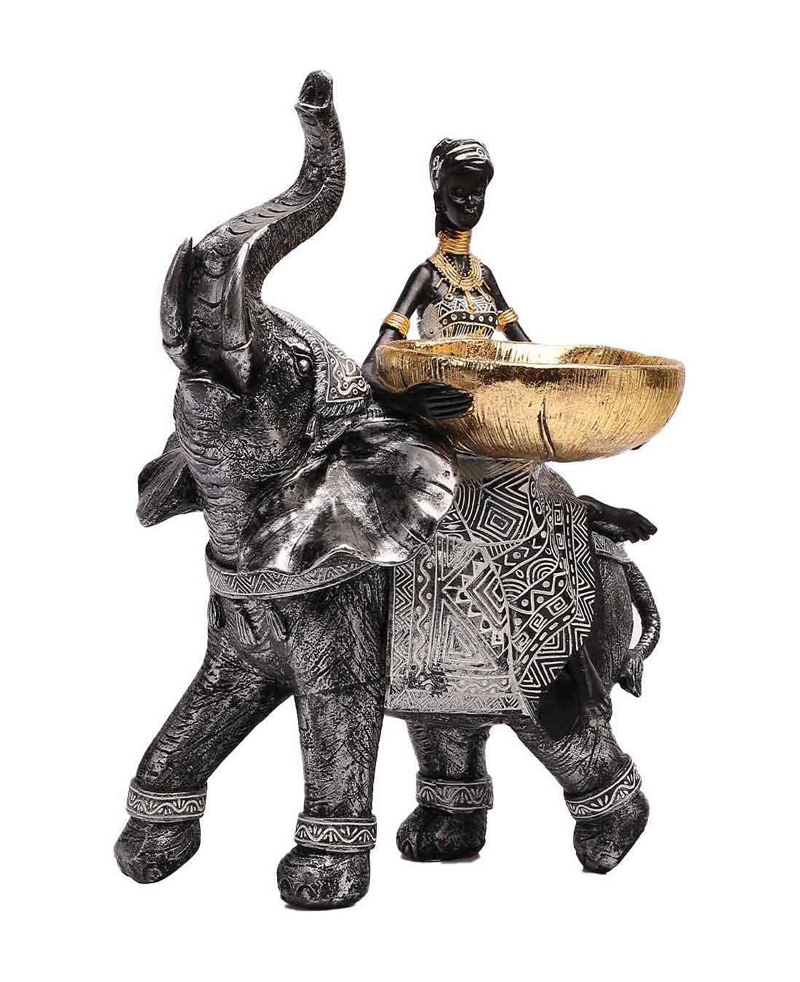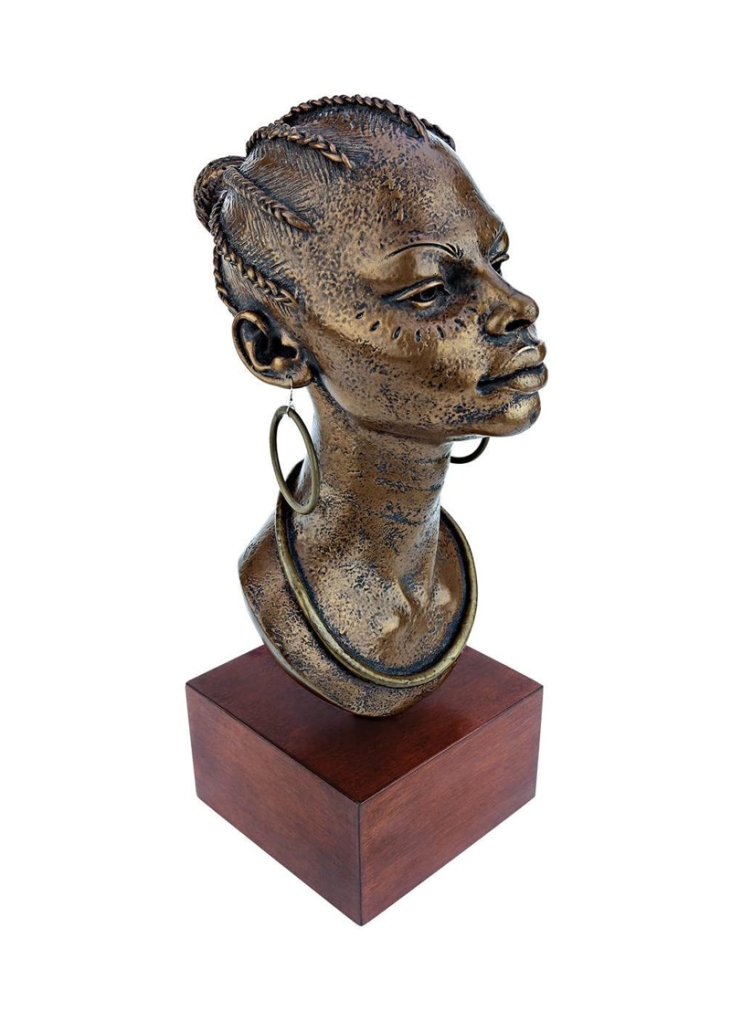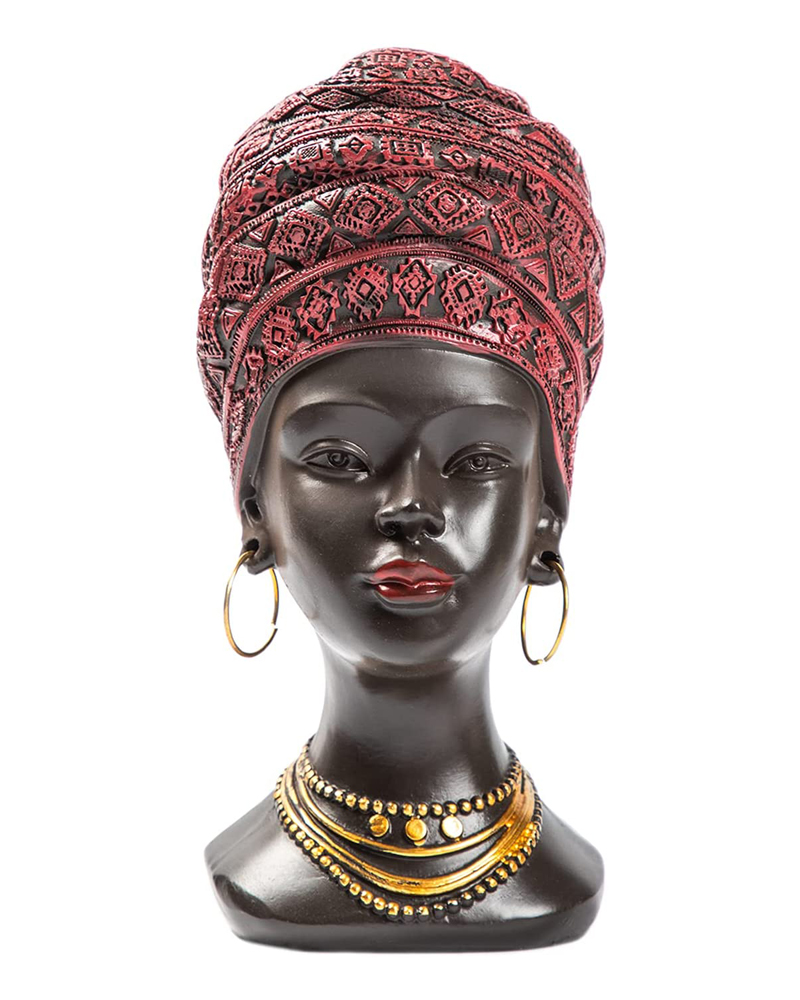African God of Lightning and War Chango Shango Statue
African God Chango Shango Statue hand sculpted miniature, cast from high quality designer resin with highly detailed and hand painted antique bronze finish that mimics bronze texture. This extremely detailed and well-made statue is made with cold cast bronze, the special production process of this piece, originated from Great Britain, uses actual bronze powder mixed in the cold cast resin in order to ensures a richer, more life-like presentation. One of the most celebrated of the Orisha, Chango, is revered as the Sky Father. A spirit and god of thunder and lightning. An Orisha is a spirit that reflects one of the manifestations of God in Africa’s Yoruba religion. Many Orishas have found their way throughout the Americas via the Atlantic slave trade and are now expressed in practices as varied as Santería, Candomblé, Trinidad Orisha, and Oyotunji. Chango is the orisha of drumming, dancing, thunder, fire, and the essence of masculinity, he was one of the 4 pillars of Santeria along with Obatala, Oshun and Yemaya.
Chango teaches his worshippers to live a full life, achieving what life has to offer while maintain self-control of one’s life. Chango is one of the most celebrated and loved orishas in Santeria because of his generosity and the protection he confers upon his followers. Shango (Yoruba language: Ṣàngó, also known as Changó or Xangô in Latin America, and as Jakuta or Badé) is an Orisha, a deity in Yoruba religion. Genealogically speaking, Shango is a royal ancestor of the Yoruba as he was the 3rd Alaafin of the Oyo Kingdom prior to his posthumous deification. Shango has numerous manifestations, including Airá, Agodo, Afonja, Lubé, and Obomin. He is known for his powerful axe. He is considered to be one of the most powerful rulers that Yorubaland has ever produced. In the New World, he is syncretized with either Saint Barbara or Saint Jerome. Shango was the 3rd Alafin of Oyo, following Oranmiyan and Ajaka. He brought prosperity to the Oyo Empire. According to Professor Mason‘s Mythological Account of Heroes and Kings, unlike his peaceful brother Ajaka, he was a powerful and violent ruler. He reigned for 7 years which were marked by his continuous campaigns and many battles.
His reign ended due to his inadvertent destruction of his palace by lightning. He had 3 wives, namely Queen Oshun, Queen Oba, and Queen Oya. The Oyo Empire fell into civil war in the 19th century. It lost Ilorin when the Fulani and Hausa soldiers of the Afonja led a successful revolt. Some of the slaves brought to the Americas were Yoruba, one of the various ethnic groups drawn into the Atlantic Slave trade, and they brought the worship of Ṣàngó to the New World as a result. Strong devotion to Ṣàngó led to Yoruba religions in Trinidad and Recife, Brazil being named after the deity. In Yorubaland, Ṣàngó is worshiped on the 5th day of the week, which is named Ojo Jakuta. Ritual worship foods include guguru, bitter cola, àmàlà, and gbegiri soup. Also, he is worshiped with the Bata drum. One significant thing about this deity is that he is worshiped using red clothing, just as he is said to have admired red attire during his lifetime. African God of Lightning and War Chango Shango Statue measures: 8 inches / 20 cm x 6.7 inches / 17 cm x 10.7 inches / 27 cm.
African God Chango Shango Statue on Amazon.
African God Chango Shango Statue on eBay.
African Statues and Gods Statues.










You must be logged in to post a comment.